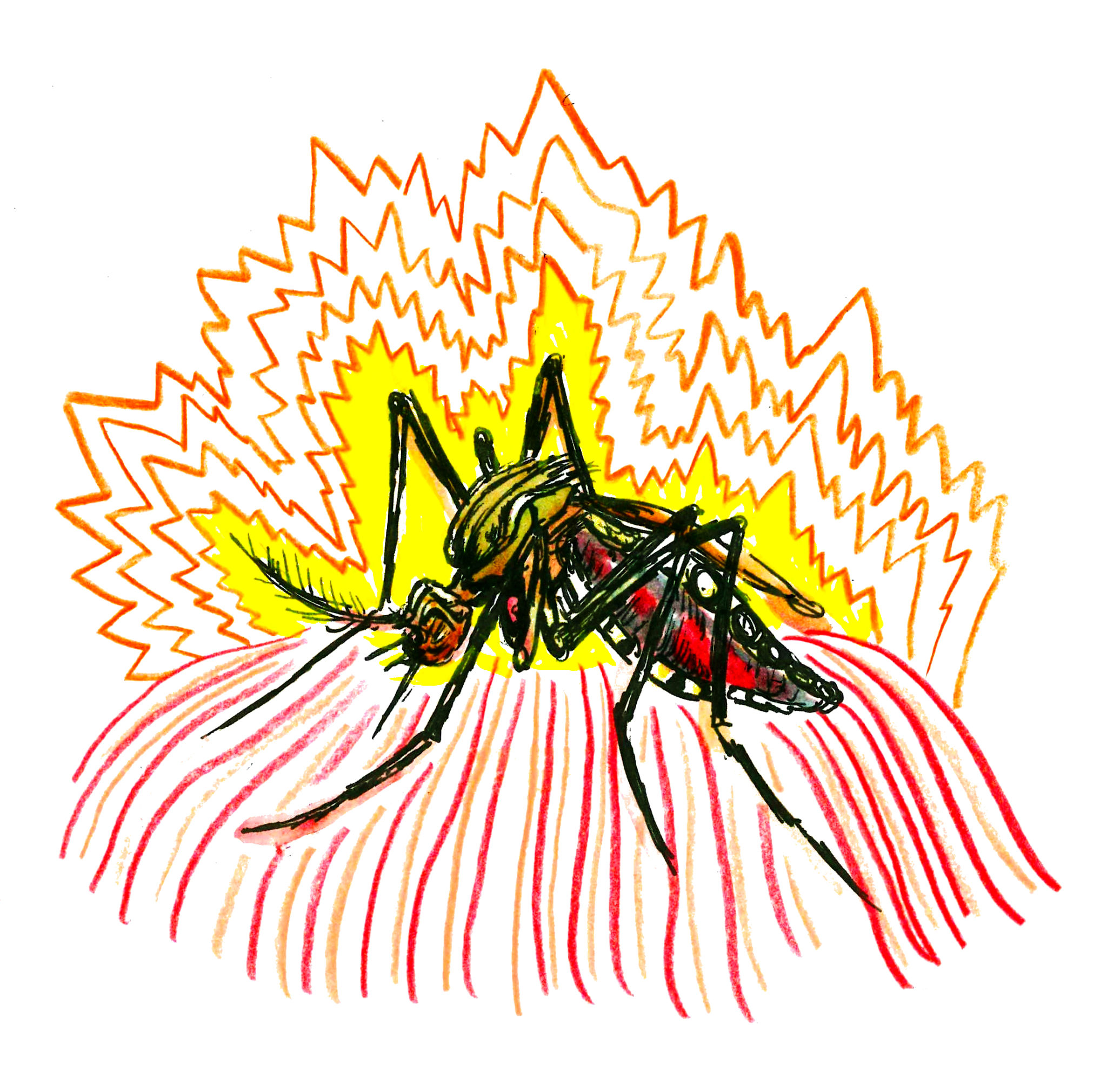
Yale researchers have published a study examining the immune system’s response to the Zika virus and that response’s role in nerve-related complications.
Published in the journal Nature Microbiology on Nov. 20, the study found that Zika-associated paralysis in mice is caused by a complex interaction involving a key player in the mice’s immune systems.
“We found that the immune response to the virus was responsible for the nervous system damage seen with a Zika virus infection,” first author Kellie Jurado said. “Essentially, the antiviral response was capable of limiting virus replication within neurons but also ultimately led to paralysis.”
The Zika virus, which humans contract primarily through mosquito bites, can cause symptoms ranging from a rash and fever to severe birth defects in the fetuses of pregnant women who are infected with the virus. In some cases, Zika infection results in neurological complications such as Guillain-Barré syndrome, a condition that causes damage to the nerves controlling motor function and can eventually lead to paralysis.
Specifically, the researchers implicated immune response cells called CD8 T-cells as the cause of the paralysis in mice. These T-cells respond to signals produced by body cells infected with the Zika virus, and do “exactly what they’re supposed to do,” killing infected cells to prevent further spread of the virus, said corresponding author Akiko Iwasaki. However, when Zika infects the brain, T-cells target and destroy specialized cells called neurons, which cannot be replaced. Ultimately their destruction leads to paralysis.
When Jurado joined Iwasaki’s lab, she took an interest in discovering how the Zika infection causes paralysis in mice, Iwasaki said. First, she researched how the Zika virus could bypass the blood-brain barrier to infect neurons. By analyzing the brains of infected mice, Juardo discovered that astrocytes — the glial cells responsible for supporting the blood-brain barrier — were highly susceptible to infection by the Zika virus. Once these astrocytes had been infected, a breach in the blood-brain barrier would arise.
“She became interested in understanding what types of cells are infiltrating the brain,” Iwasaki said.
To test their hypothesis that Zika-associated paralysis was in reality caused by CD8 T-cells, the researchers blocked normal immune response in mice infected with the virus to see how they would be affected. Jurado said the mice did not become paralyzed and survived much longer than did the mice with functioning immune responses, but ultimately, these mice did succumb to Zika infection. Because of this, she said, the team does not believe fully blocking the immune response is a viable option for treatment.
“The blocking is just to allow us to manipulate the system to understand the mechanism behind the pathology,” Jurado said. “We are not suggesting blocking the response as treatment.”
Nevertheless, she added, understanding the pathology associated with the infection and immune response could “be helpful with the design of future therapeutics.”
Suppressing the immune system to prevent neuron destruction could be an option in preventing paralysis, Iwasaki said, but not suppression to the point where the virus would replicate uncontrollably. Unchecked replication could be particularly problematic in cases of fetal Zika infection, where brain development could be adversely affected. And, Iwasaki added, it is unclear whether this approach could be applied to humans, since the team’s research was based on mouse models.
According to Iwasaki, the researchers were able to circumvent one difference between Zika infection in mice and humans. The virus blocks a specific receptor in human body systems, but does not affect the analog of this receptor in mice. In order to produce comparable conditions, the researchers bred mice that were deficient in the particular receptor that would be inhibited in humans.
Moving forward, the researchers plan to further explore possible links between viral infections and neurological diseases beyond just the Zika virus, Iwasaki said. Jurado said they plan to delve further into Zika-associated paralysis, as well.
At the moment, researchers are “following up on what the CD8 immune response is targeted toward,” Jurado said. They have noticed that the cells are recognizing not only viral antigens but also autoantigens, proteins that play a key role in many autoimmune disorders in which the body mistakenly attacks its own cells.
“We are interested in further building on the findings as to dissecting what antigen the CD8 T-cells are targeting within the brain,” Jurado said.
Approximately 3,000 to 6,000 people contract Guillain-Barré syndrome in the United States each year.
Asha Prihar | asha.prihar@yale.edu







